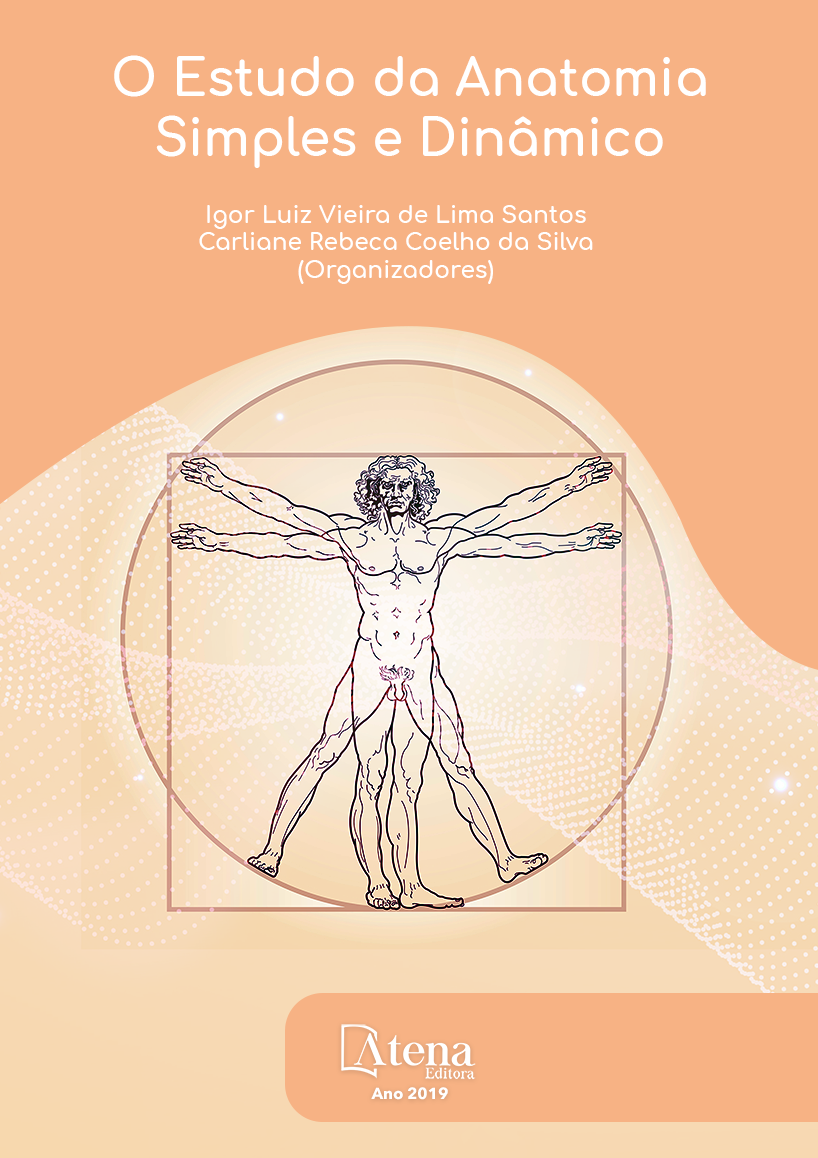
ALUSÃO HISTÓRICA DA PARTE PROFUNDA DO MÚSCULO TEMPORAL
Na grande parte dos livros e atlas de
anatomia humana, a parte profunda do músculo
temporal (PPMT) não é citada. O músculo
temporal é um dos músculos da mastigação,
classificado como músculo em leque, sendo
que, sua parte superficial possui origem
na fossa temporal e inserção no processo
coronóide da mandíbula. Este capítulo teve
como objetivo realizar uma descrição da PPMT,
além de uma alusão histórica do mesmo.
Foi realizada uma busca em livros, atlas de
anatomia humana e artigos científicos sobre o
músculo temporal. Foram pesquisados artigos
em inglês e português. Não foram estabelecidas
restrições em relação ao ano das publicações.
Encontramos artigos científicos controversos.
Alguns autores defendem a ideia da existência
de um músculo isolado denominado músculo
esfenomandibular. Porém, a maioria dos
autores que realizaram estudo de dissecação
da região temporal, o descrevem como o
feixe profundo do músculo temporal. A PPMT
apresenta morfologia semelhante a uma
pirâmide triangular. O tubérculo esfenoidal e
a crista infratemporal da asa maior do osso
esfenóide foram referenciadas como regiões
de origem da PPMT, com inserção na crista
temporal, saliência presente na face medial
do processo coronóide da mandíbula. A PPMT
normalmente não é citada pela literatura, porém,
estudos realizados por meio de dissecação
mostraram a presença constante da mesma
nas peças cadavéricas, com origem e inserção
distintas. A PPMT apresenta relação com os
músculos bucinador e constritor superior da
faringe. Devido à sua área de inserção, pode
ter implicações clínicas, como a interferência
na estabilidade de próteses totais ou parciais
inferiores.
ALUSÃO HISTÓRICA DA PARTE PROFUNDA DO MÚSCULO TEMPORAL
-
DOI: 10.22533/at.ed.32419250917
-
Palavras-chave: Anatomia. Músculos da mastigação. Músculo temporal.
-
Keywords: Anatomy. Muscle of Mastication. Temporalis Muscle
-
Abstract:
In the most of the human anatomy books and atlas, the deep part of the
temporalis muscle (DPTM) is not cited. The temporalis muscle is one of the muscles of
mastication, classified as convergent muscle, and its superficial part originates in the
temporal fossa and insertion in the coronoid process of the mandible. The purpose of
the study was to describe the DPTM, and to make a historical reference related to it.
A search was made in human anatomy atlas and books, besides scientific manuscripts.
Manuscripsts in English and Portuguese were searched, with no year restrictions.
Some authors defend the idea of the existence of an isolated muscle called
sphenomandibularis muscle. However, most of the authors who performed a dissection
study of the temporal region describe it as the deep bundle of temporal muscle. The
DPTM presents a triangular pyramid morphology, with expressive volume and very
different from the superficial part. The sphenoidal tubercle and the infratemporal crest
of the greater wing of the sphenoid bone were referred to as DPTM origin regions, with
insertion in the temporal crest, a prominence on the medial surface of the coronoid
process. DPTM is not usually mentioned in the literature, however, dissection studies
showed the constant presence of it in the cadaver, with distinct origin and insertion.
DPTM is related to the buccinator and superior constrictor muscle of the pharynx. Due
to its insertion area, it may have clinical implications, such as interference in the stability
of mandibular complete and partial dentures.
-
Número de páginas: 15
- Gabriely Ferreira
- Marcelo Brito Conte
- Marcela de Almeida Gonçalves
- Ticiana Sidorenko de Oliveira Capote


